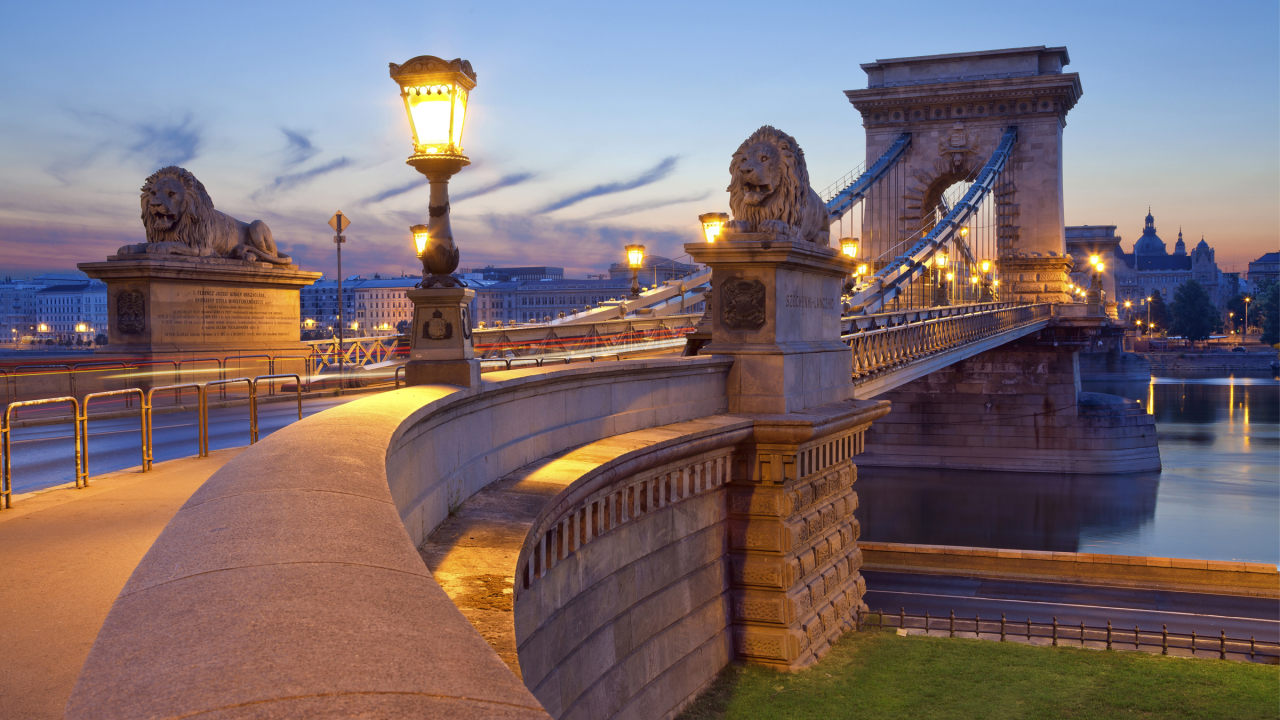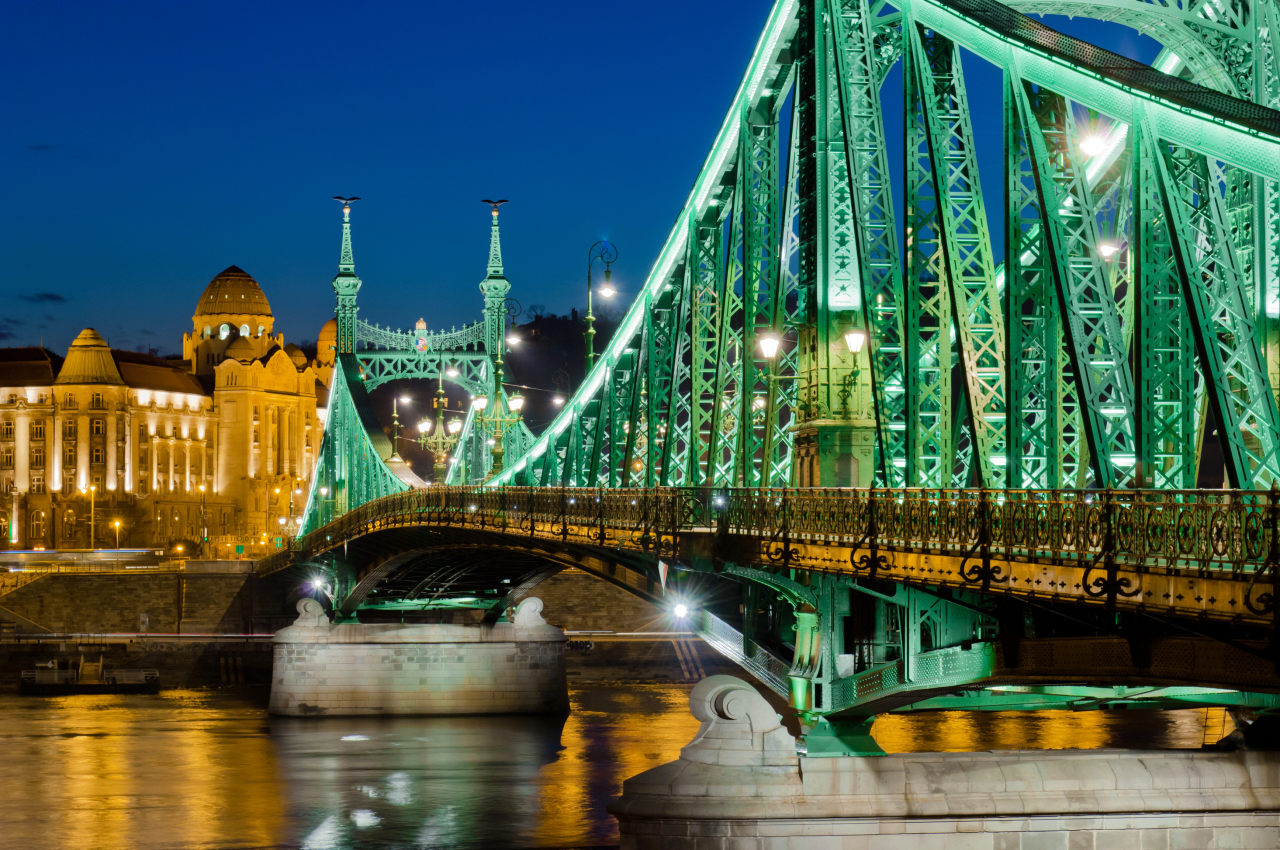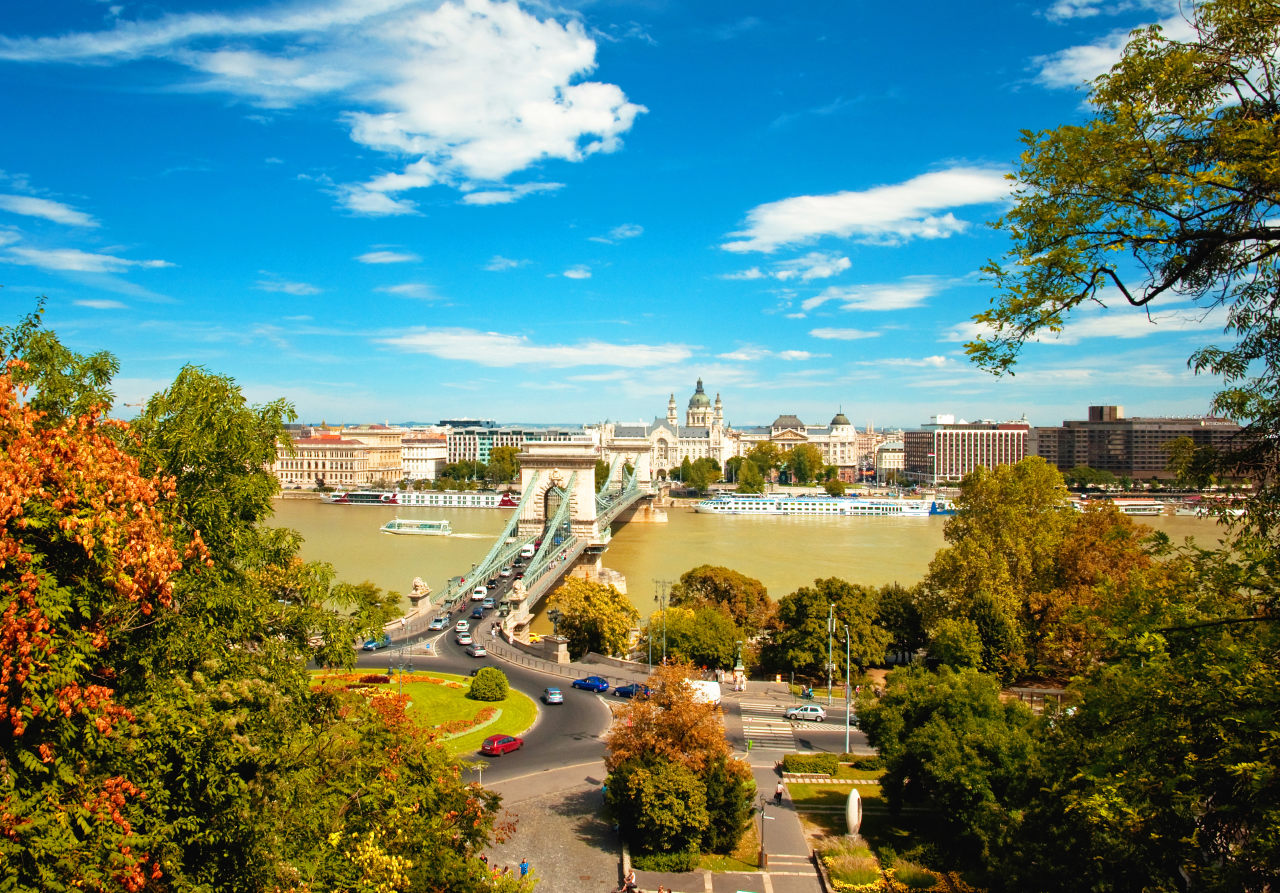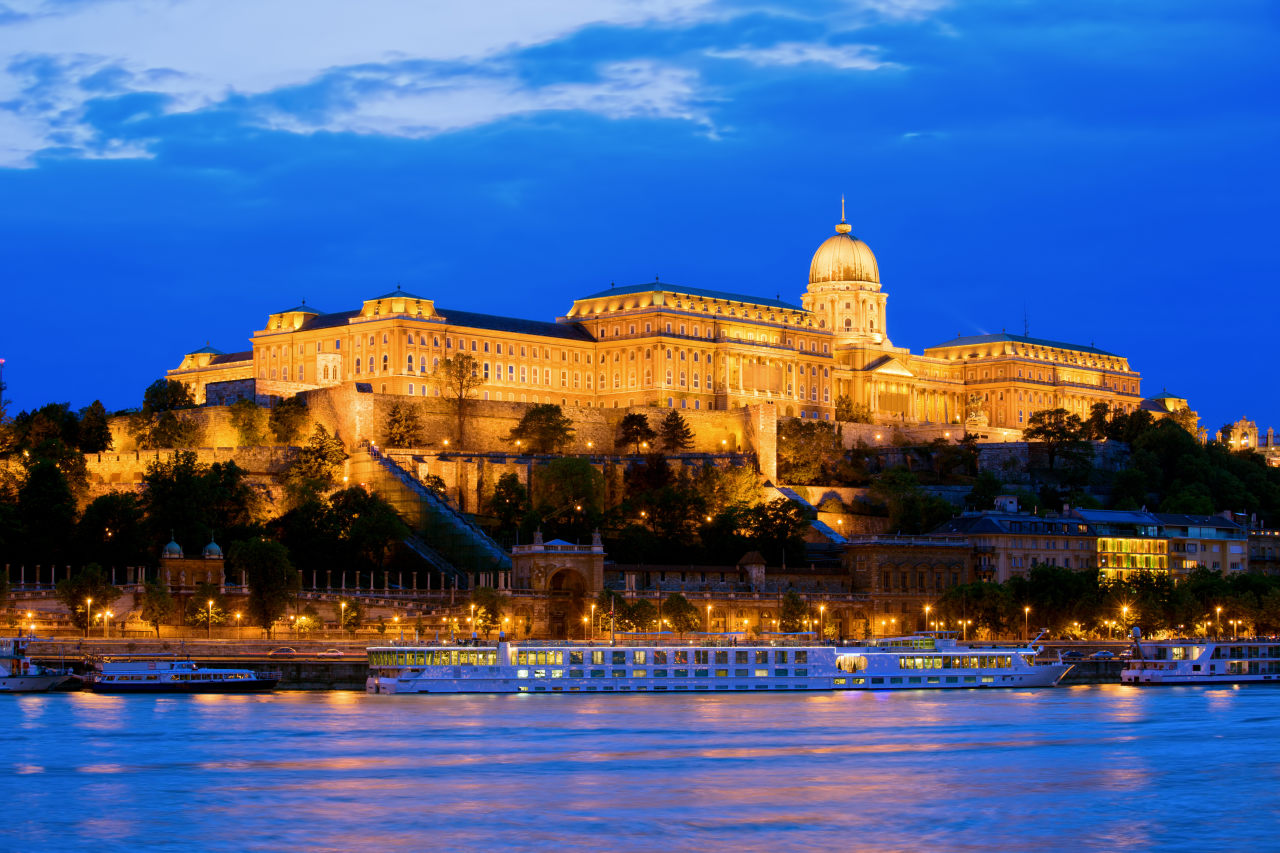
Pearl of the Danube: Budapest’s best views
The most spectacular sights in the Hungarian capital.

Liberty Bridge
Four Hungarian tural birds crown the bold Modernist girders of Liberty Bridge – a fantastically ornate structure which dates back to the 1890s. As is common in the Hungarian capital, this landmark bridge is at its best when lit up at night.

St Stephen’s Basilica
This impressive basilica can be seen from almost anywhere in Budapest; its intricate spires and 96-m (315-ft) high dome (the exact height of that of the Hungarian Parliament) emerge spectacularly from within the cityscape. Another landmark illuminated at night, it vies with Chain Bridge (see below) to be one of Budapest's most photographed sights.

Heroes’ Square and the Millennium Monument
Standing at the heart of Heroes’ Square, the grandiose Millennium Monument was erected to commemorate the 1,000-year anniversary of the conquest of the Carpathian Basin by the Magyars. Visitors flock daily to the plaza to take in this magnificent show of victory.

Városliget park in winter

Pest cityscape from Castle Hill
Panoramic views across to the Pest side of the city greet those willing to climb (or take the funicular) to the top of Castle Hill. Autumn is a fantastic time to see this part of the Hungarian capital; the usually green clusters of trees and shrubbery along the embankment turn orange and golden as the cooler weather takes hold.

Mátyás Church
The profusion of architectural styles betrays both the building’s and the city’s troubled history; after the original church was destroyed in 1241, a new one was built between 1255 and 1265, and even further renovations occurred in the the centuries afterwards. Today, the stout Béla tower and splendid multi-coloured roof makes this one of the most striking sights in Budapest.

Margaret Island
Margaret Island (Margitsziget) is a serene oasis in the middle of the Danube. Once popular with medieval kings, and with monks attracted by its peace and quiet, the Island is now host to myriad visitors admiring its landscaped gardens, tranquil lakes and fascinating statues.

Vajdahunyad Castle
In the middle of Városliget city park is the incredible Vajdahunyad Castle, a mixture of Renaissance, Gothic, Baroque and Romanesque styles. It was designed by architect Ignác Alpár, whose grand idea was to illustrate the evolution of Hungarian architecture in a single building.

Castle Hill, Buda seen across river from Pest
Views of the whimsical Fisherman’s Bastion and the grand Mátyás Church can be taken in across the Danube. A boat ride is a wonderful way to soak up the capital’s key riverside sights, though don’t miss the chance to see these striking structures up close.

The Royal Palace at night

Gellért Monument
According to legend the city’s patron saint, Bishop Gellért was pushed off the hill which now bears his name for attempting to convert Budapest’s citizens to Christianity. Constructed in 1904, the monument to this Christian martyr is now looking a little worse for wear – it maintains its majesty from afar, however, and the hilltop it is perched upon offers breathtaking views of the city below.

Chain Bridge
Completed in 1849, this was the first permanent crossing between Buda and Pest. Two huge towers support the mammoth chains from which the bridge takes its name, while a proud (and somewhat menacing) concrete lion sits either side of the structure. The bridge remains one of the city’s most-photographed sights.

Fisherman’s Bastion
From early morning until late at night, visitors bypass Mátyás Church and head for the Fisherman’s Bastion, whose turrets offer some of the most picturesque views of Pest in the city. It was built in Neo-Romanesque style by Frigyes Schulek as a monument to the Guild of Fishermen in 1895.

Hungarian Parliament
One of the finest examples of Neo-Gothic architecture in Europe, the Hungarian Parliament was the largest parliament building in the world at the time of its construction in 1902. Sensational close-up, the spires and symmetry of this remarkable edifice are arguably even better when admired from across the river.


